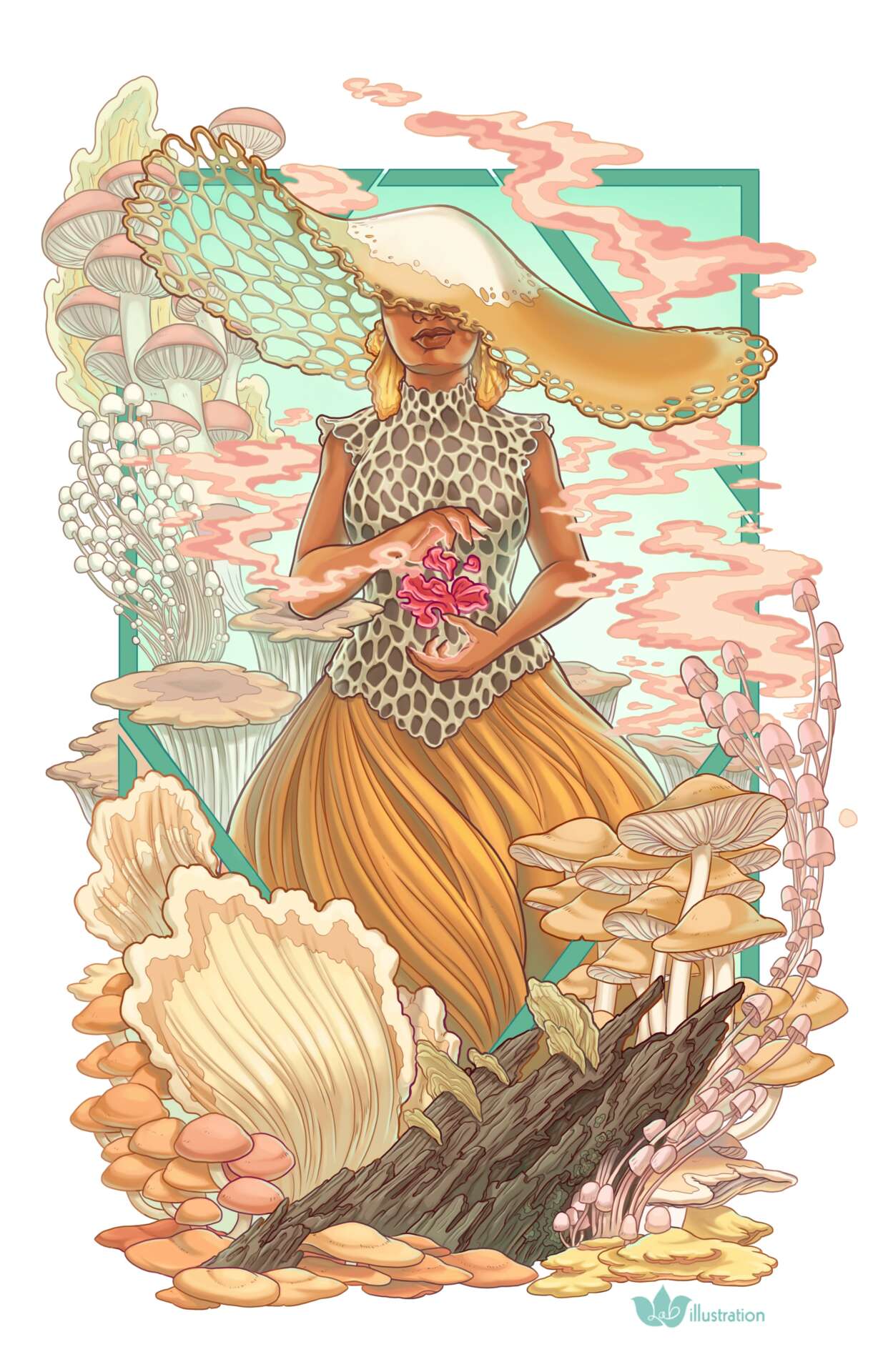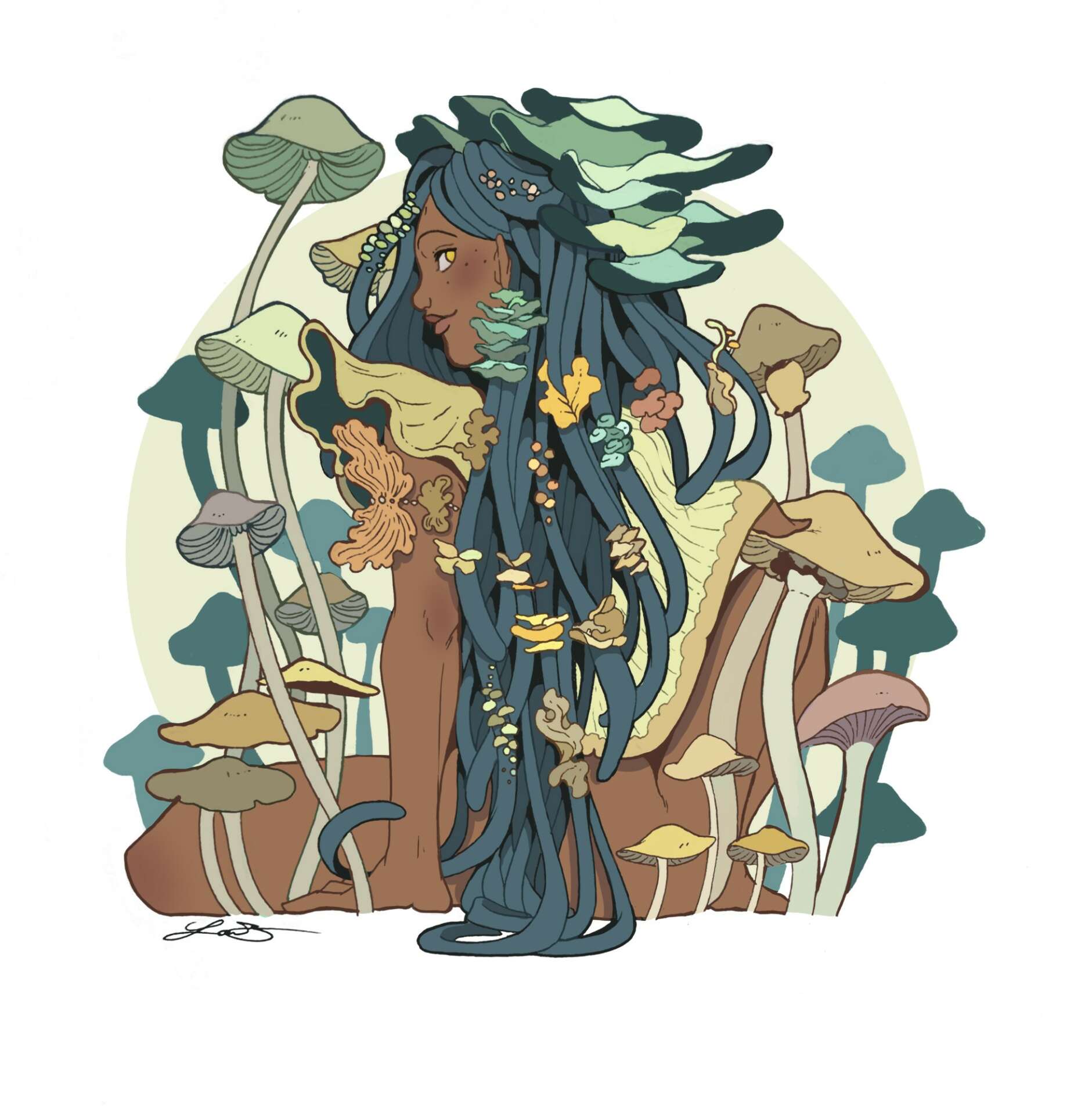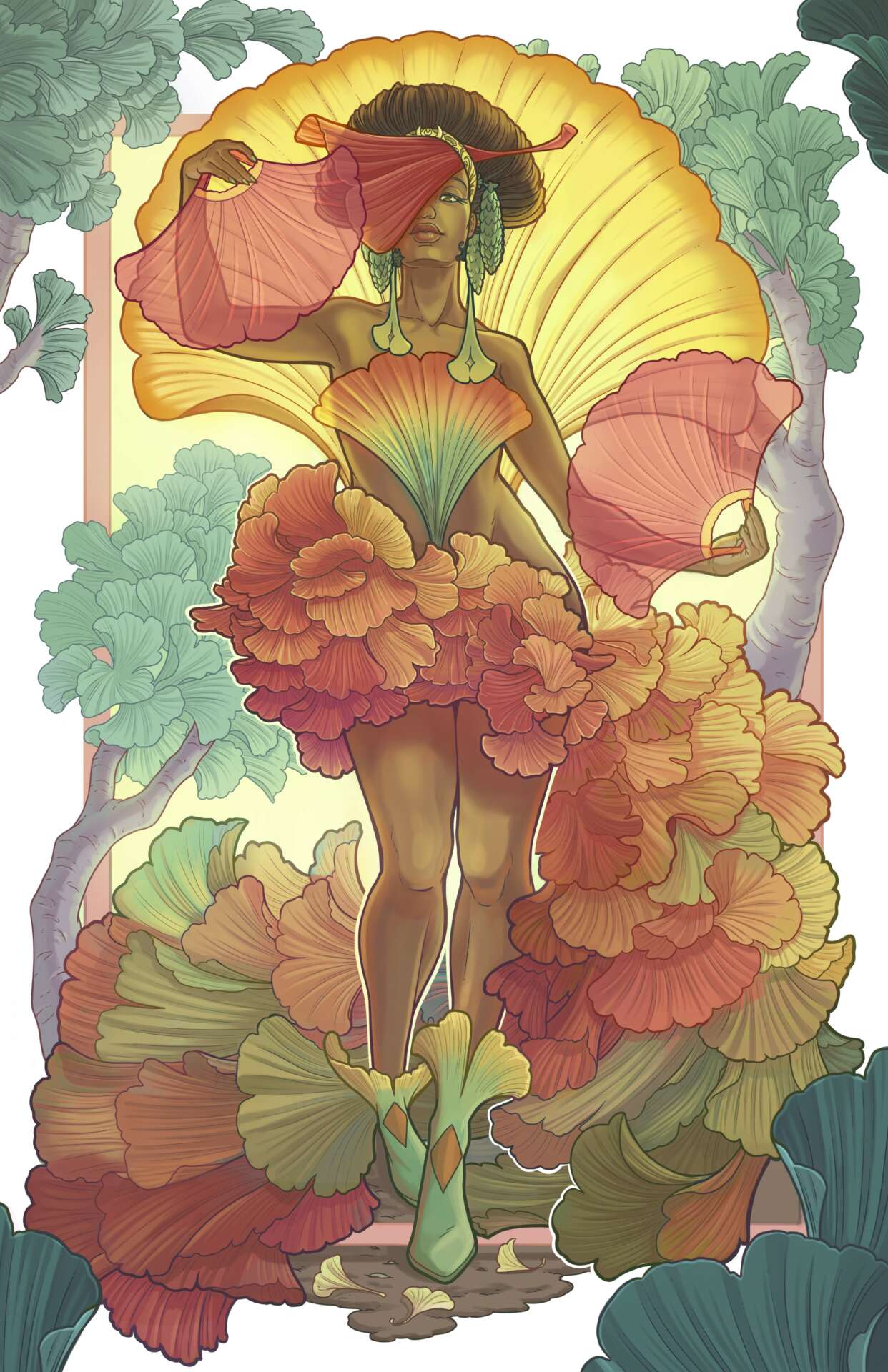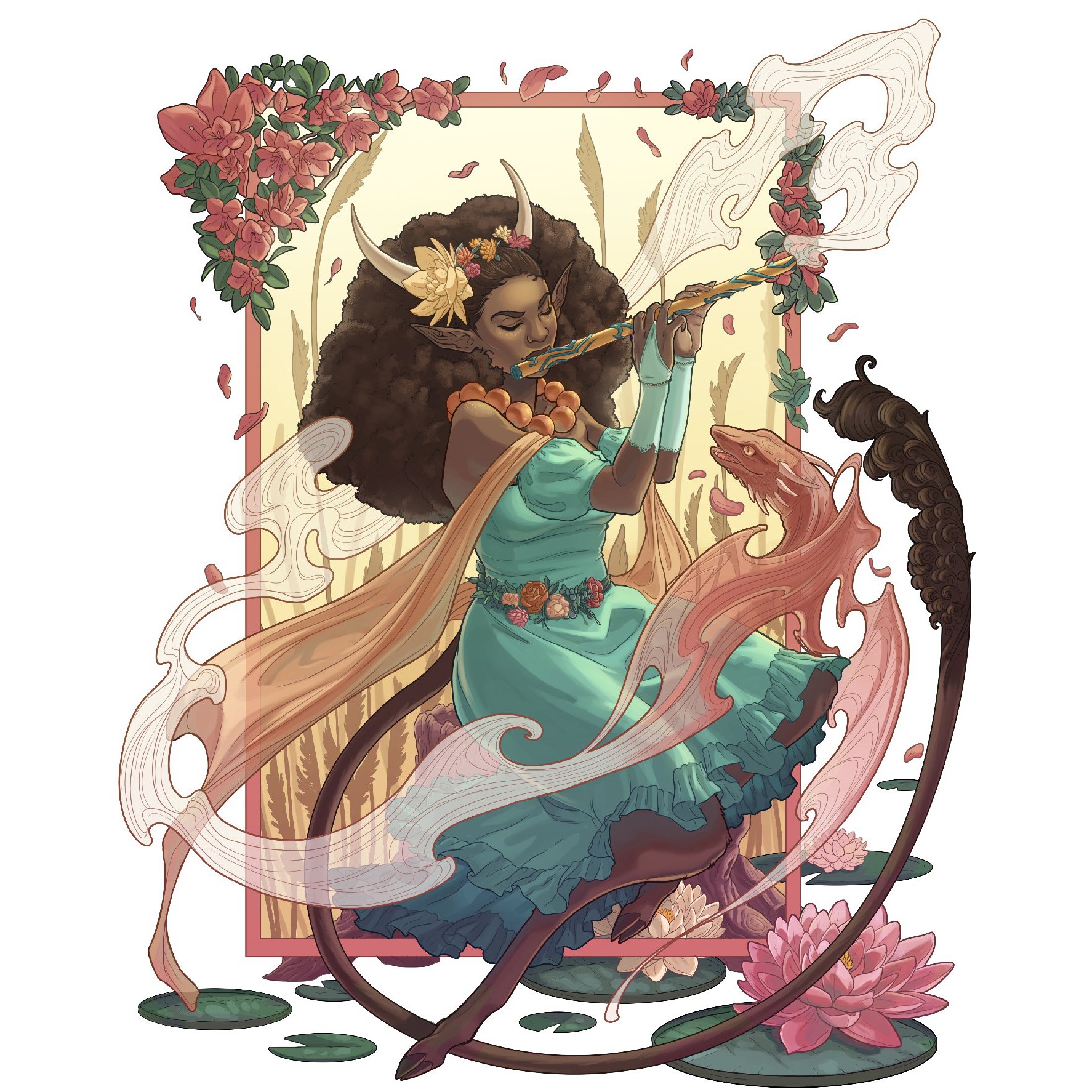Alright – so today we’ve got the honor of introducing you to Lauren Brown. We think you’ll enjoy our conversation, we’ve shared it below.
Alright, Lauren thanks for taking the time to share your stories and insights with us today. Are you able to earn a full-time living from your creative work? If so, can you walk us through your journey and how you made it happen?
As a full-time creative who has both a studio job and an independent art career, there are a ton of lessons and learnings that I’ve uncovered over the years. It started, however, after I graduated with my MFA in Illustration from Savanah College of Art and Design: I was trying to put my work everywhere in order to freelance, and got an email out of the blue from a studio called Floyd County Productions, where I was asked to apply to become a Background Artist for the studio that created the show, Archer. I took the art test, and a month later, I was moving to Atlanta to start my career in animation.
I was nervous about starting a real career and had a ton of impostor syndrome, but that feeling melted away when I realized how similar it was to being in school. At SCAD, I worked on 6 different student films in the Animation department. These projects functioned very similarly to how the real industry works, with teams dedicated to different parts of the animation pipeline. When I realized this, and also took in how laid-back everyone was (no one wore suits or fancy clothes, and everyone was fairly nerdy or artsy like me), it was easy to get into the flow of the work and I enjoyed creating backgrounds with my team.
Because I went to two schools and had no savings, but a ton of debt, I resolved to make extra money in order to pay my loans off. I began attending conventions around the country to sell my work, and also took on freelancing on various book covers, children’s books, comics, and more. I also started an online Etsy shop in 2015. During this time, the hours at the studio were very demanding: there were some weeks where I would work upwards of 60 – 70 hours per week. After getting home late, I would immediately tackle my projects for freelance or merchandise for my shop/conventions. This led to a hideous burnout that left me unmotivated to make my own personal work, but I didn’t know how to say no to more projects or conventions. I was on a ride that I didn’t know how to get off of, and it only stopped when it literally couldn’t run anymore.
The burnout only truly took over during the pandemic. This was 10 years after I started my career and I’d since transitioned over to the games industry, which paid a lot more, and yet I still didn’t know how to stop doing freelance and large projects. This led to an ADHD diagnosis and an incredible bout of creative exhaustion. I’d learned a lot about myself around this time, and that the most important thing for me to do was REST.
I love being a full-time creative, and now I know that balance is extremely important to maintain to have a successful career. You can’t always burn the candle at both ends, and you can’t only create. You have to live, experience, stay still, and appreciate the beauty in the world, and then translate those experiences into your work. You have to fill your creative well, and you can’t maintain one if all you ever do is work.

Awesome – so before we get into the rest of our questions, can you briefly introduce yourself to our readers.
I am a whimsical fantasy illustrator and Art Director. I have always been inspired by cartoons, video games, and anime, especially magical girl shows and fantastical shows. I grew up always drawing and making up worlds. My parents were fully supportive: My mom enrolled me in various art and animation classes, and my dad, who used to be a fashion designer, encouraged my love of nature and fashion (though he never taught me how to sew! Still annoyed about that!)
My current work is fully reflective of my childhood interests. I am currently working on a series I call the Avant Garden, which represents Queens adorned in gowns made from aspects of nature. The gardens they rule represent different walks of life, and teach lessons based on behaviors and relationships in nature. These Queens are also all Black women or women of color: something that I rarely saw represented in fantasy spaces. I wanted to carve out a space that positively represented women who looked like me in the hope it would inspire other artists to enter the space and create their own characters that reflected them and their dreams.
I also sell more whimsical wares, like my series of Trash Animal Nouveau enamel pins. “Trash Animals” are animals like possums, pigeons, rats; animals typically considered pests, but actually have extremely important functions in nature. This series may seem silly on the surface, but the underlying themes serve to give honor to these animals through the irony of representing them with the extremely elegant Art Nouveau style.
I sell these works, and more, online and at conventions around the country. Even though I have struggled with burnout and exhaustion, I genuinely love creating and selling my works, and seeing the responses I get from my customers truly makes it all worth it. Knowing that I can inspire and elicit emotional reactions reminds me why I got into this career in the first place and keeps me motivated to create from my most authentic point of view.
I seek to uplift and inspire in all my works, and have started a podcast in 2020 called Painted in Color on Youtube to perpetuate this message. I run it alongside two amazing artists: Mia Araujo and Eric Wilkerson. This show delves into the real lives of artists with full-time art careers, independent or studio) and discusses mental health and intersectional struggles and mechanisms to keep yourself healthy and create your best work.

How can we best help foster a strong, supportive environment for artists and creatives?
Many people do not understand the work that goes into creative fields like illustration and animation. People equate this fields with trivial, childish pursuits, and tend to have the misunderstanding that artists simply doodle all day. I truly believe that artists would receive much more respect if only people understood the sheer amount of practice, dedication, and skill that good art takes to create.
AI has been a huge topic of conversation among the art community, and it has been able to run amok because of the lack of respect for art and artists. AI is a software that uses the entire result of millions of artists’ life’s work, and congeals it into polished imagery in a matter of minutes. The way it functions is nothing like the way artists function, and yet, we hear the same arguments about how this machinery thinks like artists think. If anyone has learned anything from reading my journey, you will see how what artists encounter in life directly translate to our works. AI requires no artistic learning in order to generate polished imagery, no understanding of principles, and no artistic growth.
Support human artists and an authentic product. Even if you don’t have money, promote artists you love by commenting, liking, and sharing their work. Gift real art to your friends and loved ones. These things may seem like a small gesture, but to an individual artist, it means the world to us in a world that has become increasingly hostile to artists and other creative industries.

Is there a particular goal or mission driving your creative journey?
I have touched on this in my intro, but my largest goal is to advocate for and inspire underrepresented artists. In my 7 years in the game industry, I have only worked with two other Black women in the game dev space, and 4 in the creative animation space. These numbers are abysmal, largely because I know how many talented people there are who are looking to enter these creative spaces. I have made it a mission to inspire and uplift, and mentor so that we can build towards better representation in these fields.
In the game industry, I co-launched and co-led the Austin chapter of an employee resource group (ERG) called BEAT! (Black EA Team) at Electronic arts, which aimed to represent and advocate for Black employees, and to educate allies within the company. We also did outreach to schools and colleges to better educate on the roles in the industry and methods to begin a career in games. I continued this work at Zynga, joining and becoming a board member of an ERG called the Black Zynga Union.
These messages are weaved into the very foundations of my art and actions, and I’m looking forward to seeing how the industry shifts and changes. We need more accessible entry-level starting points, and we need companies to adjust recruitment practices so that they continuously and actively source diverse talent. Not just when we are trending, but all the time.

Contact Info:
- Website: http://labillustration.com
- Instagram: http://instagram.com/labillustration
- Facebook: http://facebook.com/labillustration
- Linkedin: http://linkedin.com/in/labillustration
- Twitter: http://twitter.com/labillustration
- Youtube: http://youtube.com/c/paintedincolor
- Other: Etsy: http://labillustration.etsy.com


